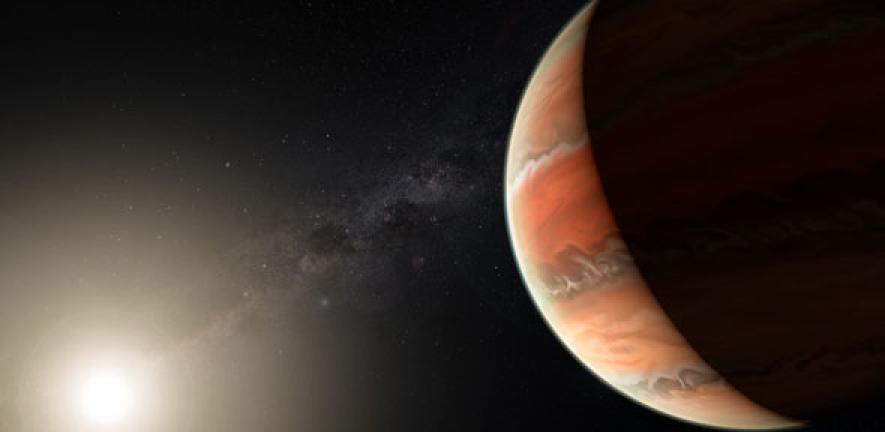
An international team of astronomers has detected titanium oxide in the atmosphere of an exoplanet for the first time. The results, reported in the journal Nature, provide unique information about the chemical composition and the temperature and pressure structure of the atmosphere of this unusual and very hot world.
An international team of astronomers has detected titanium oxide in the atmosphere of an exoplanet for the first time. The results, reported in the journal Nature, provide unique information about the chemical composition and the temperature and pressure structure of the atmosphere of this unusual and very hot world.
The clear detection of the molecule is a major observational advancement – it is an exciting time in exoplanetary science.
Nikku Madhusudhan
The planet, WASP-19b, has about the same mass as Jupiter, but is so close to its parent star that it completes an orbit in just 19 hours and its atmosphere is estimated to have a temperature of about 2000 degrees Celsius. Such planets are known as ‘hot Jupiters’.
As WASP-19b passes in front of its parent star, some of the starlight passes through the planet’s atmosphere and leaves subtle molecular fingerprints in the light that eventually reaches Earth. “Detecting these molecules is no simple feat,” said lead author Elyar Sedaghati, an ESO fellow and recent graduate of TU Berlin. “We used an algorithm that explores many millions of spectra spanning a wide range of chemical compositions, temperatures, and cloud or haze properties in order to draw our conclusions.”
Using the FORS2 instrument on the European Southern Observatory’s Very Large Telescope in Chile, the team was able to carefully analyse this light and deduce that the atmosphere contained small amounts of titanium oxide, water and traces of sodium, alongside a strongly scattering global haze.
“Titanium oxide can substantially affect the behaviour of WASP-19b's atmosphere,” said co-author Ryan MacDonald, a PhD student at Cambridge’s Institute of Astronomy. “From altering its temperature structure, to driving strong winds, we are now one step closer to uncovering the nature of this extreme world.”
Titanium oxide (TiO) is rarely seen on Earth, but it in the atmospheres of hot planets like WASP-19b, it can absorb the incoming starlight in the same way that ozone absorbs the incoming sunlight in the Earth’s stratosphere. This causes a temperature inversion in the stratosphere whereby temperature increases with altitude. The energy from the absorbed starlight higher up in the atmosphere is released locally and causes the temperature to be higher in the upper atmosphere and lower further down, the opposite of the normal situation.
“TiO has been predicted to exist in hot Jupiters for over a decade but its conclusive detection has proved elusive in the past,” said co-author Dr Nikku Madhusudhan of Cambridge’s Institute of Astronomy, who oversaw the atmospheric analyses. “The clear detection of the molecule is a major observational advancement – it is an exciting time in exoplanetary science.”
The astronomers collected observations of WASP-19b over a period of more than one year. By measuring the relative variations in the planet’s radius at different wavelengths of light that passed through the exoplanet’s atmosphere and comparing the observations to atmospheric models, they could extrapolate different properties, such as the chemical content, of the exoplanet’s atmosphere.
This new information about the presence of titanium oxide and other metal oxides will allow a deeper understanding of the chemical and physical processes in exoplanetary atmospheres. Looking to the future, once astronomers are able to observe atmospheres of possibly habitable planets, the improved models will give them a much better idea of how to interpret those observations.
“This important discovery is the outcome of a refurbishment of the FORS2 instrument that was done exactly for this purpose,” said co-author Henri Boffin from ESO, who led the refurbishment project. “Since then, FORS2 has become the best instrument to perform this kind of study from the ground.”
Reference:
Elyar Sedaghati et al. “Detection of titanium oxide in the atmosphere of a hot Jupiter.” Nature (2017). DOI: 10.1038/nature23651
Adapted from an ESO press release.

The text in this work is licensed under a Creative Commons Attribution 4.0 International License. For image use please see separate credits above.




